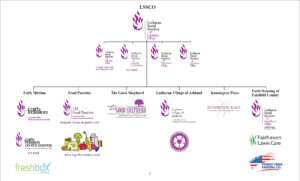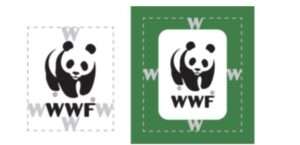
Building visibility and recognition for your nonprofit’s brand is like painting a masterpiece. It requires creativity, patience, and a keen eye for detail. But fear not, my friends, I’m here to share some tips and tricks to help you master the art of brand awareness and make your organization shine!
Crafting Your Canvas: Defining Your Brand Identity
Before you can start painting your brand’s masterpiece, lay the groundwork by defining your brand identity. Think of it as setting up your easel and choosing your colors. Start by reviewing your brand framework: What is your nonprofit’s mission, purpose, and values? Who is your target audience? What sets you apart from other organizations in your sector? By answering these questions, you’ll be able to create a clear and compelling brand identity that resonates with your audience.
Take a look at Charity: Water. They have a very specific brand identity centered around transparency, empathy, and innovation. This highly-recognizable profile has helped them stand out in the crowded nonprofit landscape.

Brushing Up Your Messaging: Telling Your Story
Telling your story is the crux of amplifying your brand. Humans are hardwired to respond to narratives we can relate to. Your messaging is like the brushstrokes that bring your brand to life. Make sure it’s authentic, compelling, and consistent across all channels, both internal and external. Whether you’re writing a blog post, building an employee recognition program, crafting a social media caption, or speaking at an event, every interaction with your audiences is an opportunity to reinforce your brand’s message and values.
Take a page out of the playbook of Feeding America, the largest hunger-relief organization in the United States. They focus their messaging on inspiring action and creating a hunger-free America, which has helped them rally support from donors, volunteers, and advocates across the country. They do this through impactful storytelling about families who are experiencing hunger and how that affects their lives daily. We can all relate to a child who is having trouble focusing in school because she didn’t have dinner the night before. That story inspires us to help.
Adding Color to Your Visual Identity: Designing Your Brand Assets
Visual identity plays a crucial role in brand awareness. It’s essential to invest time and resources into creating eye-catching brand assets. From your logo and color palette to your website and marketing materials, every visual element should reflect your brand’s personality and values. Remember, consistency is key—make sure your brand assets are cohesive and recognizable across all platforms.
When we rebranded LSS, the organization had 11 different websites, all looking entirely different. Many programs had standalone logos and color palettes. Nothing was the same. This discourse caused a lot of confusion with stakeholders because no one was really sure what LSS was or did. Pulling together the visual identity into one cohesive brand was key to our successful rebrand.


Putting Your Brand on Display: Amplifying Your Reach
Remember that every time you publish something online, send a direct mail donor appeal, print annual reports, or speak about your organization, you put your brand on display. Every time to write an internal policy, make decisions on programming, or write a job description, you are also putting your brand on display. These are all opportunities to amplify your reach and meaningfully engage your stakeholders.
For marketing purposes, use a mix of traditional and digital tactics to amplify your reach and engage with your audience. There are certain traditional strategies that are still very powerful drivers of engagement in the nonprofit world, including events, phone campaigns, and direct mail. If they are still working for you, keep at it. Just make sure that every message and every image is brand-right and cohesive with all other campaigns, online and off. Remember, every touchpoint is an opportunity to increase brand awareness and build meaningful connections with your community.
For example, the World Wildlife Fund maintains a consistent message across all channels, including their website, social media, print materials, and tv ads. Their messaging focuses on wildlife conservation, sustainability, and the importance of protecting the planet for future generations. WWF’s iconic panda logo is instantly recognizable and is used consistently across all channels. They mirror the black and white color scheme of the logo in their branding materials, website design, and social media graphics, creating a cohesive visual identity.

WWF also produces engaging content that resonates with their audiences. From compelling stories about endangered species to informative infographics about environmental issues, WWF’s content is designed to educate, inspire, and motivate action. WWF’s integrated approach to branding ensures that their message reaches a wide audience and resonates across different platforms, driving engagement, awareness, and support for their mission.
Final Brushstrokes: Measuring Impact
Last but certainly not least, don’t forget to measure your impact! Tracking key metrics like online engagement, donor and volunteer retention rates, unaided brand awareness, and Net Promoter Score will help you gauge the effectiveness of your efforts and identify areas for improvement. Remember, building brand awareness is an ongoing process. Keep experimenting, iterating, and refining your approach to ensure your nonprofit continues to make a lasting impression. When you make brand awareness an essential organizational goal, you build sustainability into your strategic plan.
I hope these tips and real-life examples inspire you to take your nonprofit’s brand to new heights. Remember, the canvas is yours to paint, so make it a masterpiece! If you’d like me to help you discover and amplify your organization’s brand, contact me today.
